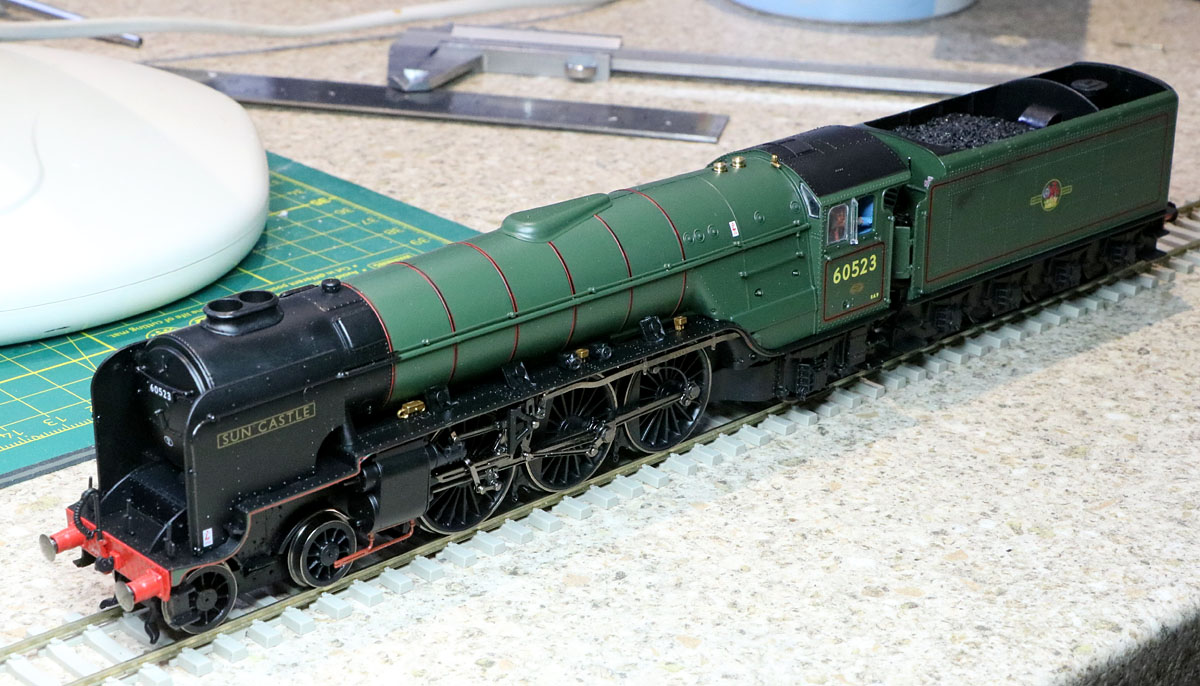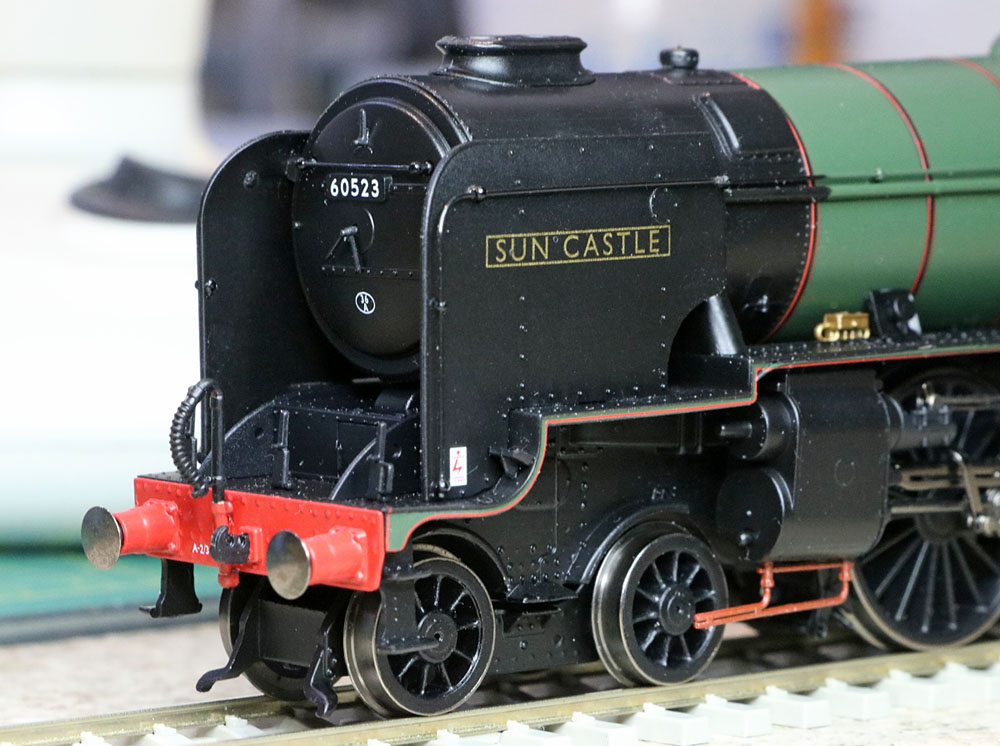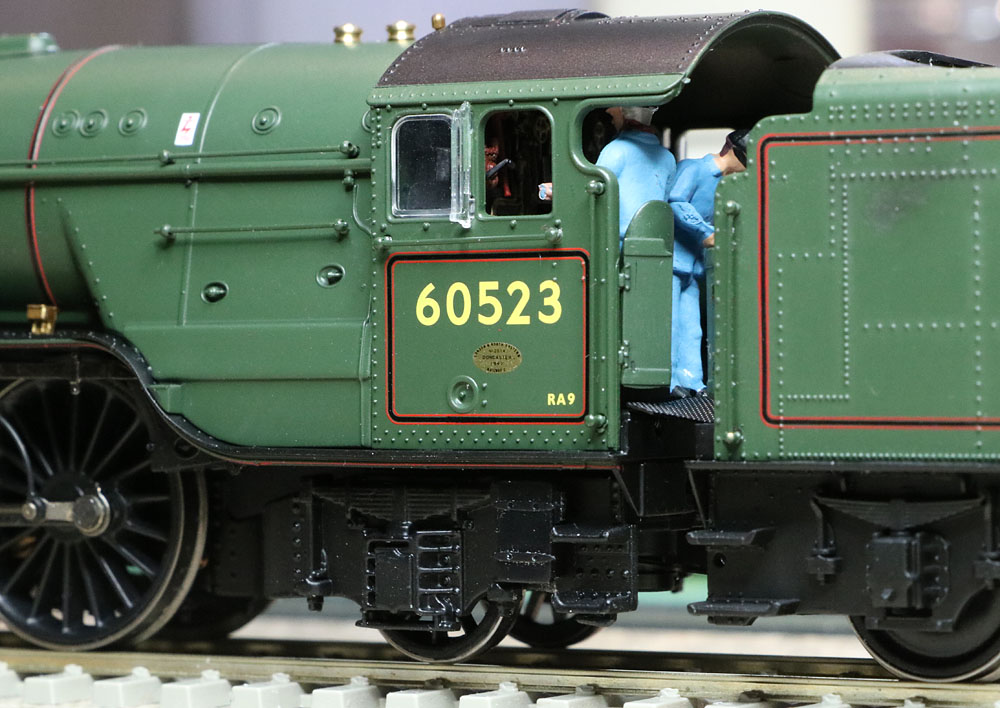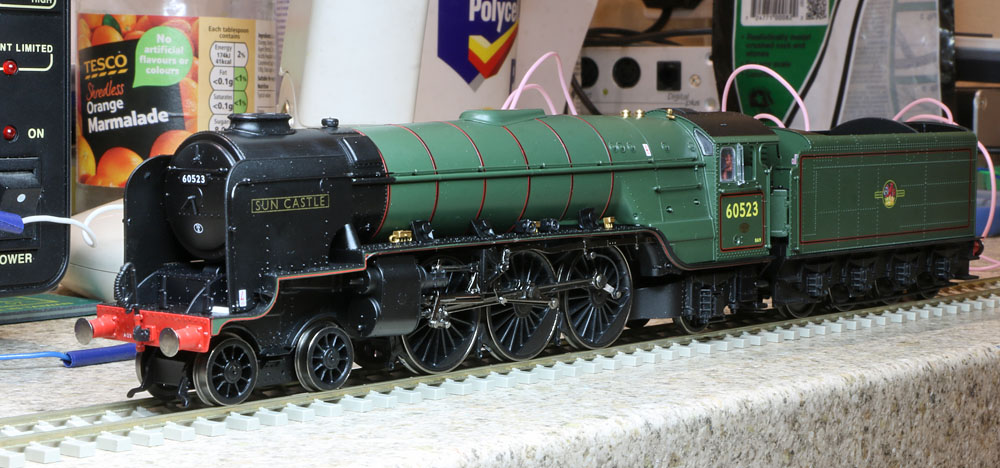
Hornby website rendering of the new locomotive.
|
Background: Despite the RA9 route availability rating, we have been advised that in extreme circumstances (e.g. enforced diversions) ECML locomotives of this axle loading did occasionally run on the March to Cambridge loop line, via Histon village. 60523 spent several allocations at Peterborough New England shed and so was more likely than most to have made an occasional sortie along the line, no doubt taking great care to minimise track forces while crossing the River Ouse bridge. (This was the most fragile piece of infrastructure on the RA7 line.) Thompson's A2/3 design (like his A2/2) had a key weakness in the design of the frames at the front end of the locomotive. Inadequate frame rigidity in the vicinity of the cylinders, resulted in continual failures of joints and components in this area. Local frame reinforcements as applied to the A2/2 locomotives, would probably have greatly reduced faults in this area. |
|
DCC Sound Configuration: The plan is to install an ESU LokSound V5 decoder with a Locoman A3 sound file. A twin dynamic drive 4 ohm speaker and an AVX 6800uF stay alive supercapacitor, with charging voltage protection, will complete the fit. All these items will be accommodated within the tender. The original ballast weight, internal coal hopper and coal load will need to be removed to make sufficient room. Replacement ballast weights and a new dummy coal load will be incorporated. The tender modifications will be carried out in a similar manner to that of the Class A2/2 "Thane of Fife". Details can be seen in the A2/2 page of this website. |
|
Cosmetic issues on arrival: 1) The good news: Nothing obviously broken, all lamp brackets in place and no sign of warped running boards above the wheels or drooping cab. 2) The bad news: A conspicuous finger print on the smokebox top left, beside the double chimney and the smoke deflectors are not parallel to the smoke box sides.
Finger print Finger print removed by rubbing with a white spirit soaked cotton bud and the smoke deflectors bonded at the top rear to the hand rail fixing point behind the deflector and eased outwards at the forward end by small wedges bonded between the deflector and the smoke box sides (hidden behind the deflectors). |
|
Additional remedial action: I separated the loco body from its chassis to investigate the smoke deflector plate fitting. Fortunately I'm familiar with the need to remove the end of the locomotive speedo cable from the rear driving wheel before attempting this. However there was no mention of this step in Hornby's instruction sheet. The add on moulding (sand box filler?) adjacent to the speedo cable anchor point on the upper body was glued at a crazy angle to the running board, so this had to be removed and bonded in place correctly. The problems are not serious and with a little imagination can all be fixed... but its sad that Hornby are yet again releasing a beautifully designed scale model extremely reminiscent of the original locomotive that incorporates unnecessary manufacturing errors and this time, also missing detail in the instruction sheet. |
|
DC Testing: The DC performance isn't too bad. A little hesitation is apparent at extremely low speeds and curiously motor current is somewhat higher in reverse than in the forward direction. Behaviour is quite similar to that of A2/2 Thane of Fife, I hope therefore that the BEMF motor control of a LokSound V5 will get the low speed performance to an acceptable level.
Sun Castle after initial DC testing |
|
Tender mods: The first step is to remove the internal coal hopper moulding, using a small power drill equipped with a 2.5mm drill bit and my trusty Stanley knife. Managed to accomplish this without any accidental blood loss for once. Locoman is generating new software for an interpretation of the A2 sounds. Unfortunately this is for Doehler & Haass decoders only. I'm happier to stay with ESU LokSound V5, so I've stayed with the Locoman A3 LokSound solution, as used previously on the A2/2. The decoder is programmed with identical motor control adjustments to those used on the A2/2. However, the chuff rate had to be individually adjusted for this locomotive using CV57 and CV58 to achieve the necessary 6 chuffs per driving wheel revolution. |
|
Adding the extras: Bachmann locomotive crew are now installed in the cab. The locomotive brake linkage, cylinder drain pipes and front steps bagged items are all now super-glued in place. A new coal load deck has been fitted to the tender, with grey ballast stones glued in place over a polyfilla coal mound. Just awaiting a new tinlet of Humbrol matt black, to overpaint the dummy coal load. Then I can run a photo session and consider a video running on the loft layout with its A2/2 stable mate at Peterborough new England shed. |
The matt black paint has arrived....






